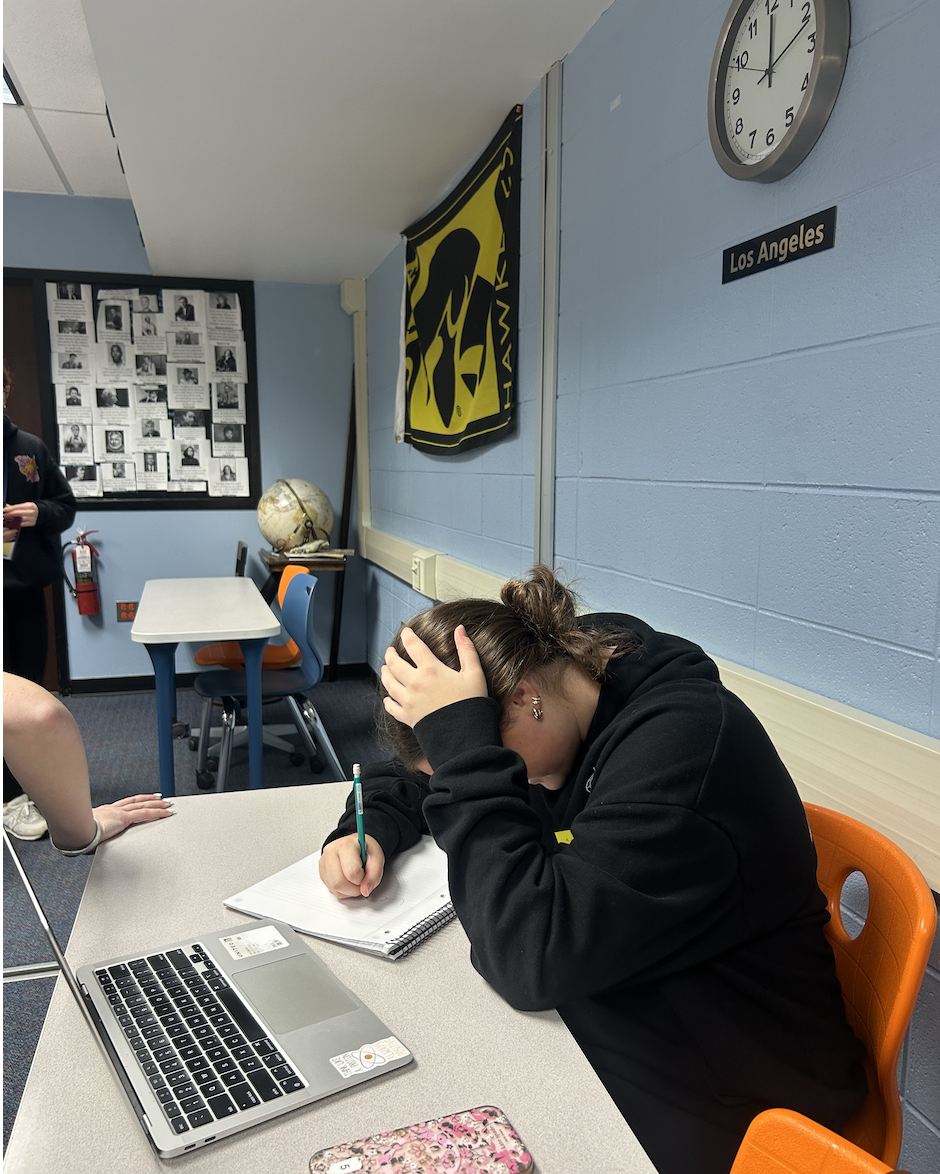A risk you take every night could give you cancer, dementia, and take years off your life. According to the U.K.’s National Health Service, “Most of us need around eight hours of good-quality sleep a night to function properly.” This poses a potent threat as 55% of Americans get fewer than eight hours of sleep a night with the average being around 6.8 hours a night.
Something is stealing our sleep.
Sleep deprivation and severe fatigue are little discussed in America’s sedulous and seemingly indefatigable society. It is common practice to work until the work is finished to a matchless level, then work further. This is a society where activity is prized more than sleep and health. Sleep is the foremost activity sacrificed when there is anything to be done. An evening out, a morning workout, extra homework, overtime hours- anything will come between a bed and its owner, between an individual and the indispensable eight hours of sleep.
Sleep deprivation is defined as the inability or difficulty to remain alert throughout the major wake period of the day, resulting in unplanned lapses into drowsiness or sleep.
Students are among the demographic most deliriously affected. More than a third of students who attend Lake Forest High School report receiving 5-6 hours of sleep a night. That being said, close to half of LFHS students are able to obtain between 7-8 hours a night.
While the latter statistic is heartening, the plight is somewhat hidden. The Nationwide Children’s Hospital asserts that adolescents — ages 10 to 19 — need 9.25 hours of sleep nightly, meaning that only 3 percent of LFHS students reported receiving the necessary amount of sleep required.
And is this even a surprise? As high school students prepare to apply to the ever increasingly selective colleges and universities of their choice, they are constantly confronted with the word “well-rounded.” Universities and colleges seek well-rounded students with high involvement, diversified interests, and of course, stellar grades. Thus, in order to produce an impressive or at least viable application, students find themselves involved in scores of clubs, sports, and activities. While some students do find themselves in this situation by choice, students are still losing their sleep.
While daytime sleepiness can be engendered for a multitude of reasons, the feeling of sleepiness is often circumstance dependent. Regarding students in particular, their school environment is especially exacerbating as a lecture requiring minimal interaction, in a dark and warm room can amplify the effects of a night little slept.
With 57 percent of LFHS students reporting to have fallen asleep in class, the learning environment itself is to be considered when evaluating the impact fatigue can have.
Pernicious and inimical is this trend seeing that a lack of sleep can cause harm to myriad of bodily systems. In an article produced by the Dove Medical press, correspondents from the University of Michigan’s Department of Neurology Shelley D Hershner and Ronald D Chervin reported that the ramifications of sleep deprivation and drowsiness can be increasingly detrimental to students as it “can result in lower grade point averages, increased risk of academic failure, compromised learning, impaired mood, and increased risk of motor vehicle accidents.” The negative impacts to not stop there either. When one’s circadian rhythm is disrupted, their metabolism will slow in function, which can lead to an additional ten pounds gained annually if not hampered by extra exercise or a decrease in caloric intake — according to the U.K.’s National Health Service. Furthermore, those who suffer from sleep deprivation are at greater risk for depression, anxiety, dementia, cancer, diabetes, and heart disease.
In LFHS, the most common reason for students to stay up late during the school week is homework, followed then by athletics. While students are heavily involved, whether it be sports, clubs, theater, or academics, the high level of participation results in a time burden, and a delicate balancing act that often results in sacrificed sleep.
Now, before troves of parents grab their pitchforks and oust the Lake Forest school board, the trend is far from isolated. According to The Journal of Adolescent Health, it was found during a 2010 large-scale study that 8 percent of US high school students obtain the necessary amount of sleep a night. It was further found that 23 percent of high school students average six hours on a school night and that 10 percent average only five hours.
This reveals the side of American society that earned the United States the nickname “The Most Overworked Country in the World,” and highlights how this trend of sleepless nights does not end after childhood, but continues until retirement. Fatigue is not an easily combated feeling either, and is one that an individual has little control over. “One of the metaphors I use is that it’s like having astigmatism. You don’t realize how bad your vision is until you get glasses or in this case, good sleep,” says Dr. Mary Carskadon, a professor of psychiatry at Brown University.
While avoiding the mollycoddling of adolescents, a restructuring of the adolescent lifestyle in the United States is imperative in the interest of their health. Habits beneficial to a solid night’s sleep need to be taught and learned not only in childhood, but in adolescent life and adulthood as well. The following list includes simple lifestyle changes that can optimize sleep:
- Follow a regular sleep schedule
- Develop a consistent bedtime routine
- Exercise during the day, but not two hours before bed
- Avoid caffeine, nicotine, and alcohol late into the day
- Avoid naps late into the day
- Avoid electronics one hour before bed
As it affects almost every aspect of the human existence, sleep is a vital part of every person’s day. A good night’s sleep will allow one to work harder, feel healthier, and be happier.
Sleep deprivation and severe fatigue are pervasive and injurious to American society, and none more so than adolescents. As students begin to exhibit symptoms similar to patients with severe narcolepsy, it becomes apparent that change must occur, and on a large-scale. These children suffer on a daily basis and see very real, long-term consequences such as a decrease in lifespan, depression, and cancer. Many of these children will be behind the wheel early in the morning too, when the effects are strongest — at this point, how much they slept the night prior is a matter of life and death each and every day.
And is it ironic that this article was released so late in the evening, written by a high school student? Perhaps, but as said before, this is the world we live in.







